2010 Ford Fusion Hybrid – Click above for high-res image gallery
Recently, we had our third opportunity to drive the 2010 Ford Fusion Hybrid. Actually, the last go around was with a Mercury Milan Hybrid, but aside from a different nose and fanny, it is the same car. Even though we did a full review of the Milan, we asked Ford for another go around because of the difference in fuel efficiency compared to the first drive we did last December in California. We managed to achieve 43.1 mpg driving around Hollywood, beating the EPA city rating of 41. But back home in Michigan, a week of driving around Ann Arbor yielded only 29.4 mpg with the first several days actually barely managing to crack 27 mpg.
Why the big drop? It wasn't that we drove the Milan like a race car, although the Fusion and Milan do have some very nice dynamic properties. No, this was all about climate. While the temperatures in Hollywood were a very temperate mid-70s in December, six weeks later in Michigan, we were barely breaking out of the teens with overnight and early morning temps in the single-digit range. What we're about to say is heresy to the hybrid true believers, but hybrids are not the best solution for every driving condition. Find out why after the jump.
Photos copyright ©2009 Sam Abuelsamid / Weblogs, Inc.
We've had the opportunity to drive a number of different hybrids over the last several years and, without fail, when driven in winter conditions, the mileage significantly degrades compared to summer motoring. Naturally, all vehicles perform worse when the mercury drops precipitously, but this seems to be particularly true of hybrid vehicles. The problem is that hybrids (at least strong hybrids like those from Ford and Toyota) rely heavily on their electric drive systems for their efficiency improvements over equivalent conventional vehicles.
Anyone who has ever left a laptop, phone or camera in a car parked outside overnight during winter has discovered that electrochemical batteries (at least the ones we have today) don't perform very well when temps drop below freezing. The same is true for hybrid batteries. Nickel metal hydride batteries used in hybrids are reluctant to let electrons flow at temps much below the mid-30s. That means that a Fusion Hybrid that starts silently when you turn the key in July immediately fires up the engine when the temperature is 10 degrees.
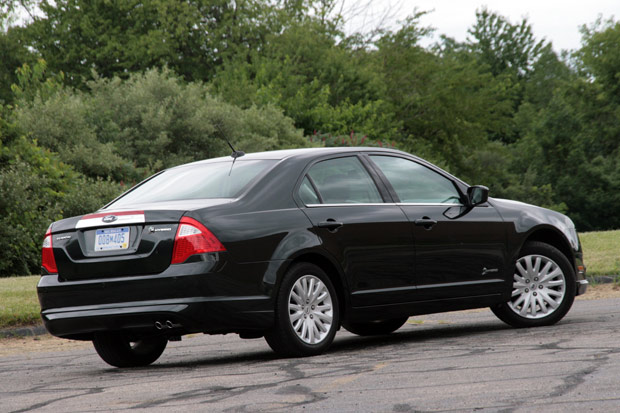
Modern engines rely on catalytic converters to transform many of the pollutants they produce into harmless gases. The problem is that the catalyst is all but ineffective until it warms up. As a result, most pollutants produced by engines are released during the first few minutes of operation after a cold start. Once the catalyst is ready, upwards of 99 percent of pollutants are eliminated. Thus, when the engine starts in a hybrid, the electronic management system is programmed to keep it running until the catalyst is warmed up enough to be effective. This obviously takes a bit longer in cold weather.
Thus, even if heaters, defrosters or lights are not turned on, a hybrid may not allow its engine auto-stop function to work for the at least the first 5-10 minutes of operation in cold weather. Yet when the ambient temperature is that low, there is no getting around using the climate control system because just breathing fogs up the inside of a car's windows. If you have a relatively short commute (5-6 miles) to the office, that means that no auto-stop will likely be available before you arrive. As a result of those conditions, the Milan Hybrid we reviewed struggled to get 25-26 mpg during that period.
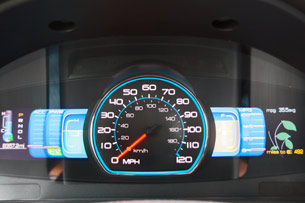
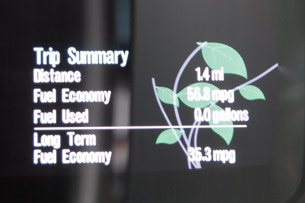
The air was a bit more temperate when the Fusion Hybrid arrived this summer, remaining mostly in the mid-70s and creeping up to the low 80s. That meant we could drive around without the air conditioning on and since we were still in the long days of the year, headlights weren't needed during the morning commute as well. The difference was immediately noticeable. The SmartGauge cluster in Ford's hybrid sedans has a number of display modes from extremely basic to hyper-miler special. That latter mode provides much more information, including the accessory power draw gauge. Back in February, it quickly became apparent that switching on the window de-foggers front and rear, heated seats and lights puts a significant drain on the electrical system of the car.
With a more comfortable climate, the Fusion Hybrid will almost always start up in silent mode. That is, turning the key triggers all of the system start-up checks followed by the ready light, but no engine start. Pulling away nice and easy, you can get out of the driveway and down the street without alerting anyone to your departure. A gentle foot on throttle can get you up to 25 mph without ever starting the engine. Eventually, of course, the engine does start up and continues running until warm.
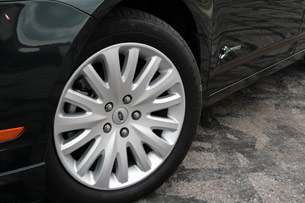
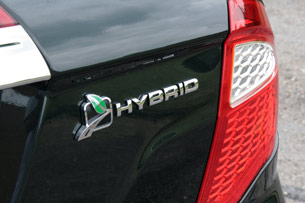
After that, however, backing off at speeds up to 47 mph signals the 2.5-liter four to switch off and cruise on the available battery power. On level ground with everything but the radio off, it's not hard to motor along silently at 45 mph for up to 1.5 miles. In the Empower mode, the SmartGauge features a power flow gauge to the left of the speedometer that includes a floating window to show where the EV mode is available under the current conditions. This makes it easy to back off just enough to get the engine to shut off.
We've already written at length about the other aspects of the new Fusion having reviewed every variant from the four-cylinder manual gearbox to the 3.5-liter Sport. Needless to say, nothing about this latest example was any different from the other models we've tested in terms of interior fit or finish and function, and it remains an excellent example for the mid-size segment. The seats in the Fusion are very comfortable and supportive and electric power-assisted steering has decent feedback and weighting. There is also a thoroughly agreeable balance between ride and handling and Michelin has done an outstanding job developing a low rolling resistance tire that still provides decent grip and doesn't always feel like you are driving on ice.
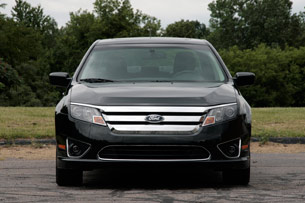
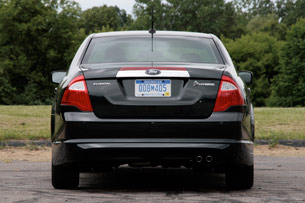
So... just how much better was the Fusion Hybrid's fuel efficiency in warm weather? We drove the Fusion Hybrid in the same area as the Milan Hybrid while replicating the driving style as closely as possible. The final tally on the Milan was 29.4 mpg. We squeezed out 38 mpg in the Fusion Hybrid with a similar mix of urban and highway driving. That's just a bit shy of what we got in California during our first drive, but since we weren't competing with other journalists for high efficiency crown, we didn't try as hard, either.
As we've said before, we generally don't recommend hybrid vehicles to drivers who spend several months of the year in cold winter weather. A diesel or conventional gas vehicle would probably be a better fit at a lower cost. On the other hand, if like an increasing number of Americans, you live in warm southern climes and you do a significant amount of urban driving, a hybrid like the Fusion is an excellent choice.
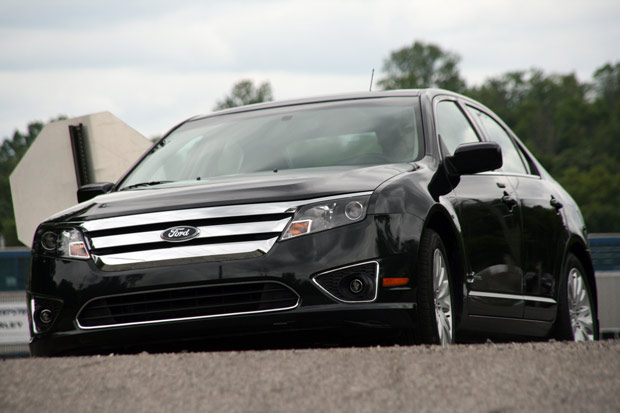
The Fusion hybrid starts at $27,700 and is also still eligible for a $1,700 tax credit from the federal government. Since Ford has now sold more than 60,000 hybrid vehicles, it is in the phase out period for the tax credit, thus the drop from the original $3,400 credit when the Fusion Hybrid launched. After October, the rebate drops to $850 and next April it goes away entirely. However, for the moment, Fusion buyers can also get a Cash for Clunkers rebate of up to $4,500 for trading in an inefficient older car that meets the program's criteria. So, if the sun's out where you live and you do a lot of stop-n-go, now may be the best time to go hybrid.
Photos copyright ©2009 Sam Abuelsamid / Weblogs, Inc.

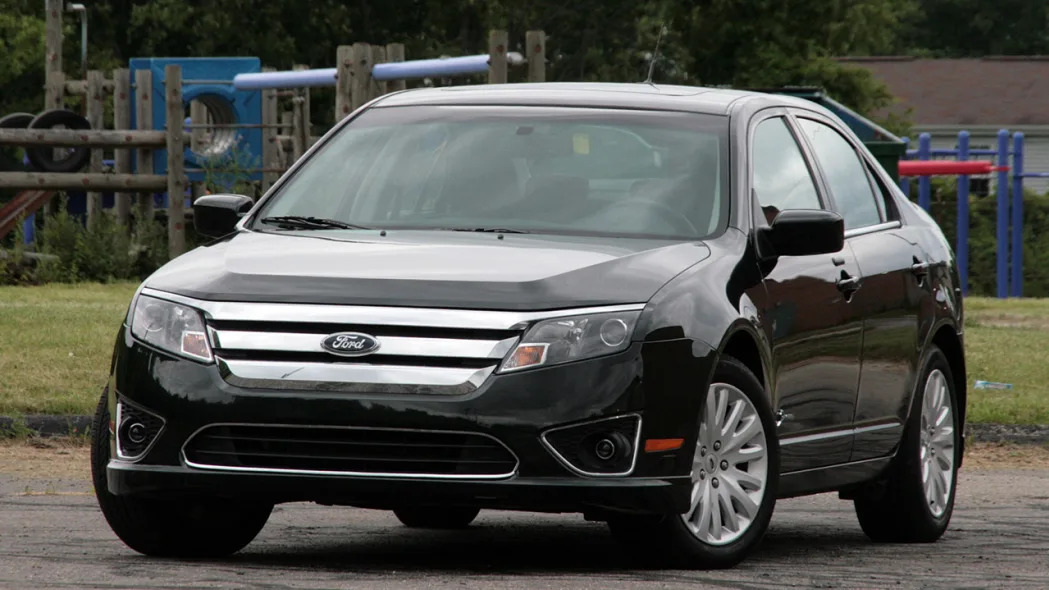

Sign in to post
Please sign in to leave a comment.
Continue